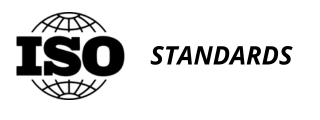ISO 9001:2015 Section 7.5 highlights the importance of creating and controlling the documentation required to support the Quality Management System (QMS). This evolution reflects technological advancements and encompasses all forms of media for documenting relevant QMS data.
Changes in Documentation Requirements Unlike previous versions of the standard, ISO 9001:2015 has become less prescriptive about documentation, allowing organizations the freedom to determine their specific needs. This recognizes the diversity of practices and the necessity for a customized approach.
Understanding the Term “Documented Information” ISO 9001:2015 uses the term “documented information” to encompass both documents (such as procedures and work instructions) and records (such as inspection reports). This merger simplifies terminology but raises the question of how to distinguish between documents and records. The key lies in the use of the terms “retain” for records and “maintain” for documents.
Flexibility in Managing Documented Information ISO 9001:2015 grants organizations significant flexibility in managing their documented information. This allows for approaches that best suit the organization’s nature, whether through electronic means or paper copies.
Implementation Examples
- Process Standardization: To ensure consistent process execution, a manufacturing company may document its operational procedures, thus reducing the need for continuous training.
- Electronic Management: An IT services company might opt for an electronic document management system to facilitate access to and revision of important documents.
Requirements for Creation and Update When creating or updating documented information, organizations must ensure appropriate identification, review, and approval of the documents. This includes details like the title, date, author, as well as the format and medium.
Control and Access Documented information must be controlled to ensure its availability and protection. This includes distribution, access, retrieval, and preservation of the information. Organizations must also manage changes to keep relevant information up to date.
Considerations for Retention and Disposal Organizations must establish clear policies regarding the retention period of documents and methods for their disposal when no longer needed. This can vary greatly depending on regulatory requirements and internal needs.
Conclusion Section 7.5 of ISO 9001:2015 underscores the critical importance of documented information in supporting the QMS. By adopting a flexible and tailored approach to their specific needs, organizations can not only meet the standard’s requirements but also enhance the efficiency and quality of their operations. The ultimate goal is to facilitate quality management that is both effective and integrated into the organization’s daily processes.




